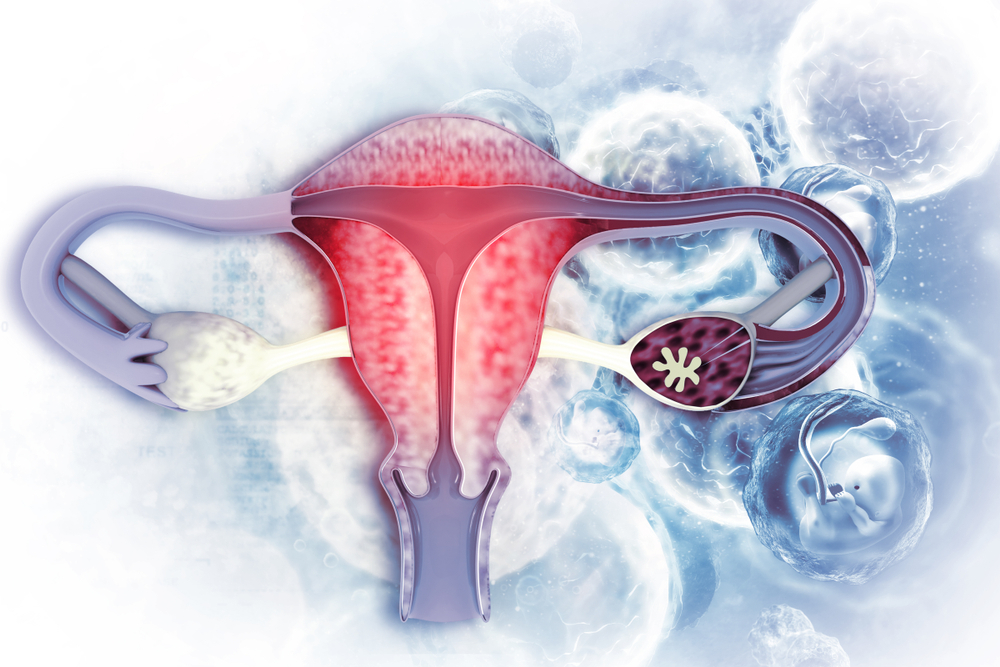Overview
Fibroids are non-cancerous growths that develop in or around the womb (uterus). They are common, with around a third of women developing them at some point. They mainly occur in women aged 30 to 50.
Many women are unaware they have fibroids because they do not experience any symptoms. If symptoms are not experienced or minor, treatment may not be necessary. See a doctor if persistent symptoms like swollen stomach, painful menstruation or chronic backache are experienced so that they can investigate possible causes.
Key Facts
- Fibroids are made of muscle and fibrous tissue.
- Fibroids can be diagnosed with an ultrasound scan, biopsy, hysteroscopy or laparoscopy.
- Symptoms of fibroids can include abdominal pain, heavy periods, persistent urination and lower back pain.
Symptoms & Diagnosis
Symptoms
Symptoms are not always experienced. Women who do, around 1 in 3, can experience
- stomach (abdominal) pain
- heavy periods or painful periods
- lower back pain
- a frequent need to urinate
- constipation
In rare cases, further complications caused by fibroids can affect pregnancy or cause infertility.
Diagnosis
As fibroids do not usually show symptoms, they are sometimes diagnosed by chance during a routine gynaecological examination, test or scan. If the doctor thinks you may have fibroids, they will refer you for an ultrasound scan to confirm the diagnosis.
If an ultrasound scan suggests you have fibroids, the doctor may refer you to a gynaecologist (a specialist in the female reproductive system) for further tests, which could include:
Hysteroscopy: A hysteroscopy is when a small telescope (hysteroscope) is inserted into the womb through the vagina and cervix so a doctor can examine the inside to look for fibroids inside the womb.
Laparoscopy: A laparoscope is a small telescope with a light source and camera at one end, which is inserted into your abdomen through a small cut in minor surgery.
Biopsy: In some cases, a small tissue sample (biopsy) may be removed during a hysteroscopy or laparoscopy for closer examination under a microscope.
Causes & Prevention
Causes
Although the exact cause is not known, it is accepted that Oestrogen tends to stimulate the growth of fibroids in many cases.
Fibroids develop during a woman’s reproductive years when oestrogen levels are at their highest. It’s also likely that they occur more often in overweight or obese women because being overweight increases the oestrogen levels in the body.
Treatments
Fibroids do not need to be treated if they are not causing symptoms. They tend to shrink when oestrogen levels are low, such as after menopause when a woman’s monthly periods stop, so any symptoms will either ease or disappear altogether.
With fibroids needing treatment, the doctor may recommend medicine to help relieve any symptoms. But you may need to see a gynaecologist (a specialist in the female reproductive system) for other medicine or surgery if these are ineffective.
The various treatments for fibroids include:
Medicines
Medication can be used to reduce heavy periods (but they can be less effective the larger your fibroids are) and shrink fibroids. Your doctor will talk through the best medication for your situation.
Surgery
Surgery to remove fibroids could be considered if your symptoms are particularly severe and if medication has been ineffective. The main surgery procedure options are:
Hysterectomy
A hysterectomy is a surgical procedure that removes the womb. It is the most effective way of preventing fibroids from coming back. A hysterectomy may be recommended if the fibroids are large or severe bleeding is experienced, and there are no plans to have more children.
Myomectomy
Myomectomy is surgery to remove the fibroids from the wall of the womb. It is the preferred surgery if you would still like to have children. Depending on the size and position of the fibroids, surgery can be through several small incisions in your stomach (keyhole surgery) or a single larger incision (open surgery).
MRI-guided procedures
There are also two relatively new techniques for treating fibroids that use MRI:
- MRI-guided percutaneous laser ablation
- MRI-guided transcutaneous focused ultrasound
Using MRI to guide tiny needles into the centre of the targeted fibroid, laser energy or ultrasound energy is passed through the needles to destroy the fibroid.
Conclusion
Treatment may not be necessary if you have fibroids but do not have any symptoms or if you only have minor symptoms that are not significantly affecting your everyday activities.
MOST COMMON







